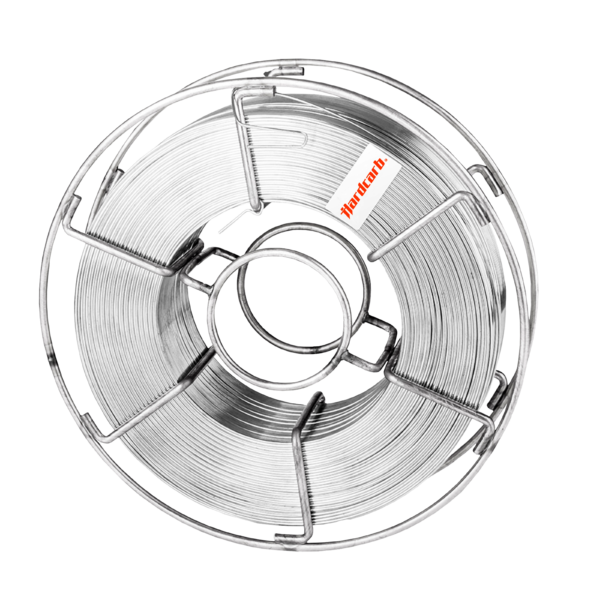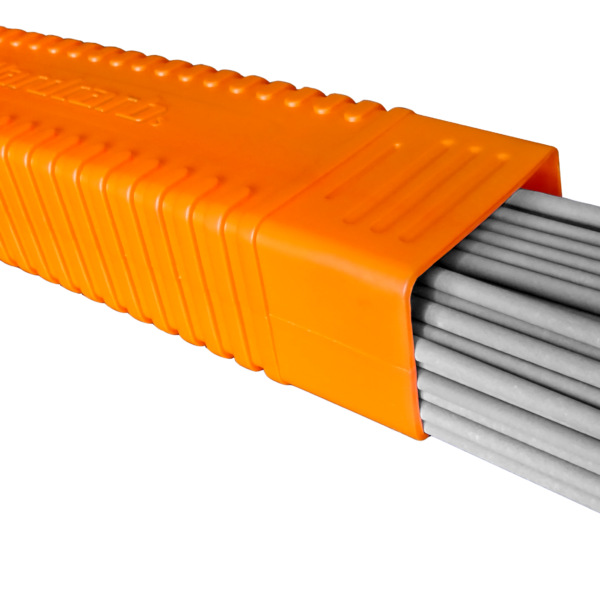Hardcarb 77


Iron base all-position hardfacing alloy that produces a primary austenite and austenite-eutectic weld deposit with good resistance to abrasion, impact and metal-to-metal wear. The deposit also exhibits reasonably good hot-forging properties . It is a low cost general purpose abrasion and impact product.
Weld deposit characteristics:
The weld deposit is magnetic and the microstructure consists of primary austenite and a eutectic of austenite plus carbides. The combination of abrasion and impact resistance coupled with hot forging properties makes this alloy particularly suitable for applications involving transportation of abrasive media under heavy loading.
The deposit exhibits reasonably good resistance to corrosive, cavitation and erosion environments
Recommended uses and applications
» plough shares, scrapper blades and cultivator sweeps
» crusher jaws, hammers, rollers and blowbars
» shovel bucket teeth and lips
» dragline buckets, links and chains
» screw flights
» coal cutters
Additional info
Anti-wear suitability
| Metal-to-Metal friction Metal surfaces in relative motion forced into contact with or without lubricant. Degradation by the formation of micro-welds between the contacting surfaces. | Suitable |
| High pressure abrasion Wear by relative movement under pressure of mineral particles of suitable hardness, shape and texture to remove material from the metal surface, leaving superficial deformation. | Suitable |
| Cavitation Tearing out of grains from the metal surface by the formation and implosion of bubbles in a liquid in rapid motion. | - |
| Mechanical fatigue Fatigue and formation of cracks in surface regions due to tribological stress cycles that result in the separation of material. | - |
| Thermal fatigue Cyclic exposure to high temperatures leading to permanent deformation by alternate expansion and contraction. Alteration of the structure and properties of the material. | - |
| Hot oxidation Creation of a poorly adhering oxide layer that reforms constantly. Degradation by loss of material thickness. | - |
Workability
| Work hardening Work hardening is the process of making a metal harder and stronger through plastic deformation. When a metal is plastically deformed, dislocations move and additional dislocations are generated. | |
| Edge retention Suitability for creating sharp edges and retaining them during operation. | |
| Machining Machinability is the ease with which a metal can be cut (machined) permitting the removal of the material with a satisfactory finish at low cost. | Not possible. Only grinding possible. |